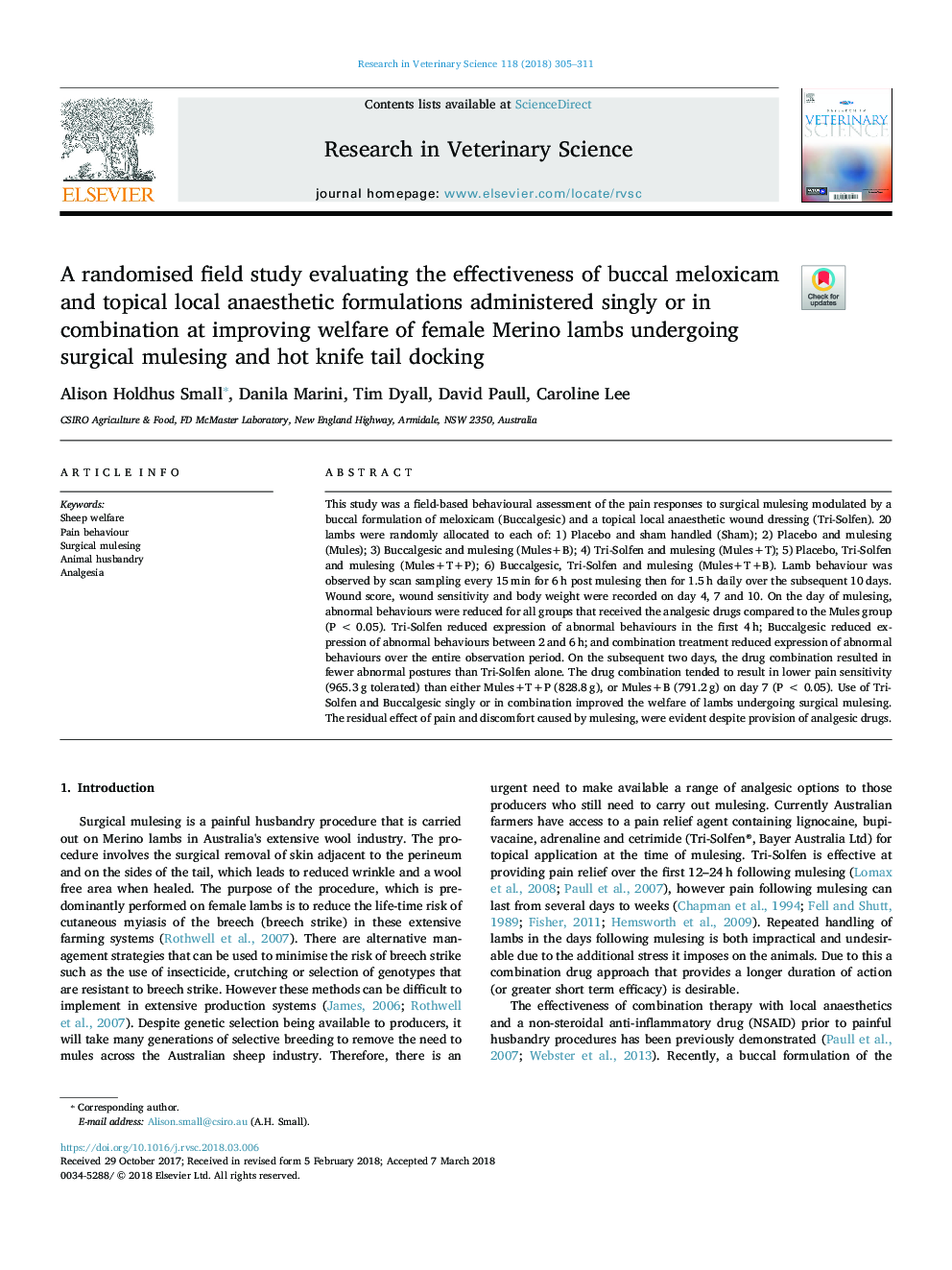| Article ID | Journal | Published Year | Pages | File Type |
|---|---|---|---|---|
| 8504000 | Research in Veterinary Science | 2018 | 7 Pages |
Abstract
This study was a field-based behavioural assessment of the pain responses to surgical mulesing modulated by a buccal formulation of meloxicam (Buccalgesic) and a topical local anaesthetic wound dressing (Tri-Solfen). 20 lambs were randomly allocated to each of: 1) Placebo and sham handled (Sham); 2) Placebo and mulesing (Mules); 3) Buccalgesic and mulesing (Mules+B); 4) Tri-Solfen and mulesing (Mules+T); 5) Placebo, Tri-Solfen and mulesing (Mules+T+P); 6) Buccalgesic, Tri-Solfen and mulesing (Mules+T+B). Lamb behaviour was observed by scan sampling every 15â¯min for 6â¯h post mulesing then for 1.5â¯h daily over the subsequent 10â¯days. Wound score, wound sensitivity and body weight were recorded on day 4, 7 and 10. On the day of mulesing, abnormal behaviours were reduced for all groups that received the analgesic drugs compared to the Mules group (Pâ¯<â¯0.05). Tri-Solfen reduced expression of abnormal behaviours in the first 4â¯h; Buccalgesic reduced expression of abnormal behaviours between 2 and 6â¯h; and combination treatment reduced expression of abnormal behaviours over the entire observation period. On the subsequent two days, the drug combination resulted in fewer abnormal postures than Tri-Solfen alone. The drug combination tended to result in lower pain sensitivity (965.3â¯g tolerated) than either Mules+T+P (828.8â¯g), or Mules+B (791.2â¯g) on day 7 (Pâ¯<â¯0.05). Use of Tri-Solfen and Buccalgesic singly or in combination improved the welfare of lambs undergoing surgical mulesing. The residual effect of pain and discomfort caused by mulesing, were evident despite provision of analgesic drugs.
Related Topics
Life Sciences
Agricultural and Biological Sciences
Animal Science and Zoology
Authors
Alison Holdhus Small, Danila Marini, Tim Dyall, David Paull, Caroline Lee,
